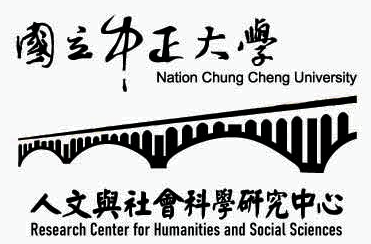|
|
Research Project:Enhancement of Cognitive Functioning through Reading and Literacy in Chinese
The cornerstones of all learning are word recognition and reading comprehension. Reading involves more than just a cursory comprehension of words; it also involves understanding the social and cultural cognitive messages conveyed in the text, which fosters creativity and problem-solving skills. As a result, the government of Taiwan declared reading education to be the most crucial pillar of human resource development more than ten years ago, elevating it to the level of national literacy education. The purpose of this study is to look at the cognitive brain mechanisms behind dyslexia, reading comprehension, and other relevant cognitive processes in Chinese. The most important factor in the language domain is "reading ability."
The ability to read is crucial in today's society. Word recognition and comprehension are the two main parts of reading. The best indicator of someone's ability to understand what they read is frequently their vocabulary and word knowledge. People with dyslexia or dyscalculia have trouble reading and writing words, as well as having trouble focusing while reading, writing continuously, pronouncing words aloud, or understanding what they are reading. This study examines word recognition, language comprehension, and associated cognitive brain mechanisms in the context of reading comprehension.
In order to plan and advance research on word recognition, reading comprehension, and brain neurology, this project makes use of the Center for Humanities and Social Sciences as a platform to integrate research resources from within the university and work with individuals and organizations conducting outside research. To establish a cross-campus and cross-national research team, we also seek experts in reading comprehension and cognitive neuroscience to act as academic advisors.
|
Reading and Word Recognition for Children and Youth
Reading comprehension involves a combination of literacy and language abilities and is a crucial talent for modern citizens. Language communication is a basic component of existence. Because of their significance, it is imperative to guarantee that everyone has basic literacy skills; but, because of their complexity, some people have trouble learning them.
The core of reading comprehension, according to contemporary research, is the integration of textual information and the creation of meaning. According to Cain & Oakhill (2014) and Tai Ho-functional Yi's grammar theory, communication between the author and the reader is achieved while fulfilling the reader's reading purpose (Tai, 1989). This project will track the development of children's reading comprehension ability and related cognitive subindicators, build a database over time, and analyze the causes of reading comprehension difficulties in order to create effective remedial instruction. It will compare the differences in cognitive and linguistic indicators between good comprehenders and poor comprehenders in order to identify the key reading comprehension mechanisms. Additionally, we monitor how students' reading comprehension and associated cognitive sub-indicators change over time.
|
|
Development of Dyslexia and treatment
Word recognition and decoding are the first steps in the complicated cognitive process of reading, which concludes with communication and comprehension of linguistic meaning. Reading is similar to scouring the brain for a logically arranged mental dictionary. Reading comprehension is achieved by consulting the mental dictionary each time a word is viewed to learn more about its pronunciation, definition, and usage.
Dyslexia, reading disabilities, and poor readers are the three categories of reading issues that are linked to this condition. "Dyslexia" refers to a particular type of reading disability that includes problems with literacy, comprehension, and reading fluency; "dyslexia" is also used to refer to a specific type of reading disability that includes problems with word recognition and decoding; "poor reader" refers to a learner who is behind the average child in reading and writing but has not yet reached the level of dyslexia.
Since phonological awareness-related skills are frequently employed as indicators of literacy development in reading research employing the phonetic alphabet system, it is believed that dyslexia is caused by deficiencies in phonological awareness during language processing (Vellutino, Fletcher, Snowling, & Scanlon, 2004). Chinese characters, however, are only sounded at the syllable level in entire characters and are challenging to break down at the phonological level. As a result, pinyin pronunciation of Chinese characters is not possible.
|
|
Reading and Writing for Hearing Impaired People
A recent topic of study is the creation of Chinese reading for hearing- and deaf-impaired people. The human brain will frequently use one part of the brain to tackle a certain task, and if that part of the brain is not sufficient, it will call on other parts to assist. This serves as a balancing mechanism. Due to their hearing difficulties, deaf and hearing-impaired people have a problem with the mechanism of reading comprehension.
The majority of human communication is verbal and takes the form of spoken language, which is heard through the "sound-hearing" channel. However, sign language, which is spoken through the "movement - vision" channel, is the kind of "seeing" that is employed by deaf people.
Many people believe that there are no rules in sign language and that it only involves hand gestures. In actuality, sign language is a genuine human language, just like spoken language. The main distinction between the two is how information is expressed and received: while sign language makes use of movements and a manual-visual language system, spoken language uses an oral-auditory language system.
A small set of fundamental symbols are used to express an infinite number of concepts using a set of principles in human natural language, whether it be oral or sign language (i.e., grammar). Every sign language has its own vocabulary and syntax, and the grammatical structure is fairly intricate, much like every speaking language.
|


